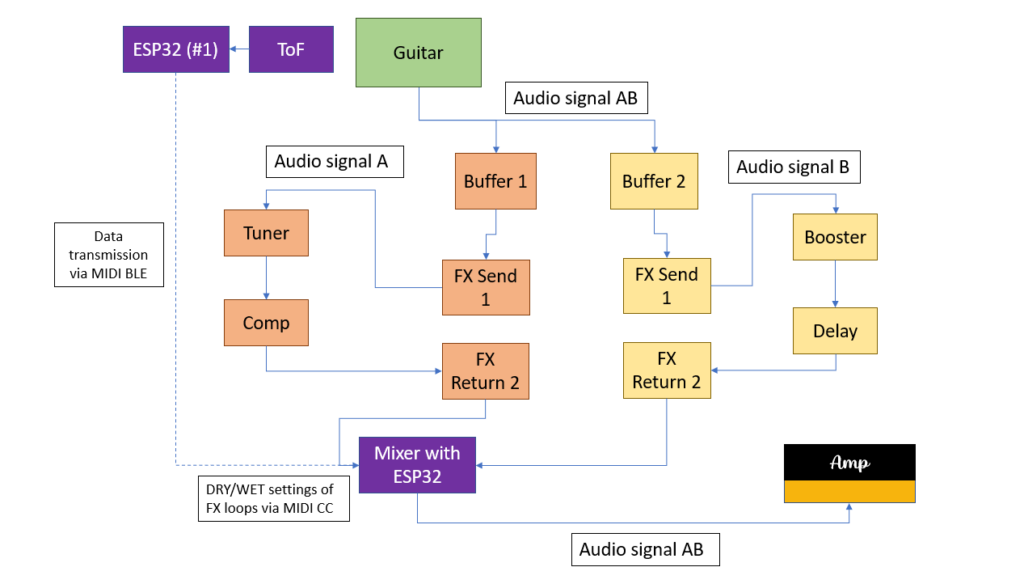While the attachment device for the left hand setup is largely finished, the final attachment for the right hand setup must still be built. The basic idea follows a prototype that has already been built. This prototype involves textile straps onto which the IMU sensor, the ESP32 and the battery supply are sewn. Unfortunately, this version resembled bandages and still has room for improvement so it was decided to build another, better version.
Firstly, the strap for the hand that secures the IMU sensor to the back of the hand was created. Therefore, a black rubber/textile band was sewn to a shape to make it wearable in a way that places the sensor in the correct position while ensuring that it does not interfere to much with the guitar playing motions of the right hand. Velcro was added to the rubber strap in specific places so it can be easily put on and fastened as desired.
Another challenge that arose during the development of said new attachment device, is that the rubber strap places the sensor in a different position than it was previously. As the sensor is an IMU sensor, its position is quite significant. In the new position, the values read by the sensor do not fit the mapping previously made when the sensor was fitted onto the wrist watch. Accordingly, the values needed to be re-mapped.
With the sensor in its new position, an electric guitar was played with the right hand performing typical strumming movements. Then, the orientation data in x, y and z direction coming in the Arduino IDE serial monitor was copied into a Word document and the values subsequently copied into an Excel sheet. There the values were put into a graph. The graph of the y values seemed to represent the strumming movements in the most accurate way. Initially, the x values appeared to be useful as well but when restarting the IMU sensor code, the x values suddenly changed a lot, and the values were in a totally different range. Consequently, the y values which were more consistent were chosen as the values to be used.
To further test the y values’ suitability, the old Pure Data sketch containing the Wah Wah effect was revisited and the y values used to control the effect. This worked fine. However, one issue remains: a way must be figured out how to use the IMU values as an expression pedal to control guitar effect pedals with an expression pedal input.
While working on the arm strap onto which the ESP32 will be fixed, another issue arose that was already mentioned in the Blog post #12: the battery supply. The AA battery pack proved to be too unwieldy to be worn on the arm so another possibility had to be found. The current solution is to simply use a small power bank to power the ESP32 of the right hand setup and possibly the one of the left hand setup as well. According to some articles on the Internet it is not the most efficient solution to power an ESP32 but considering the slight time pressure, this solution will be adopted for now.
